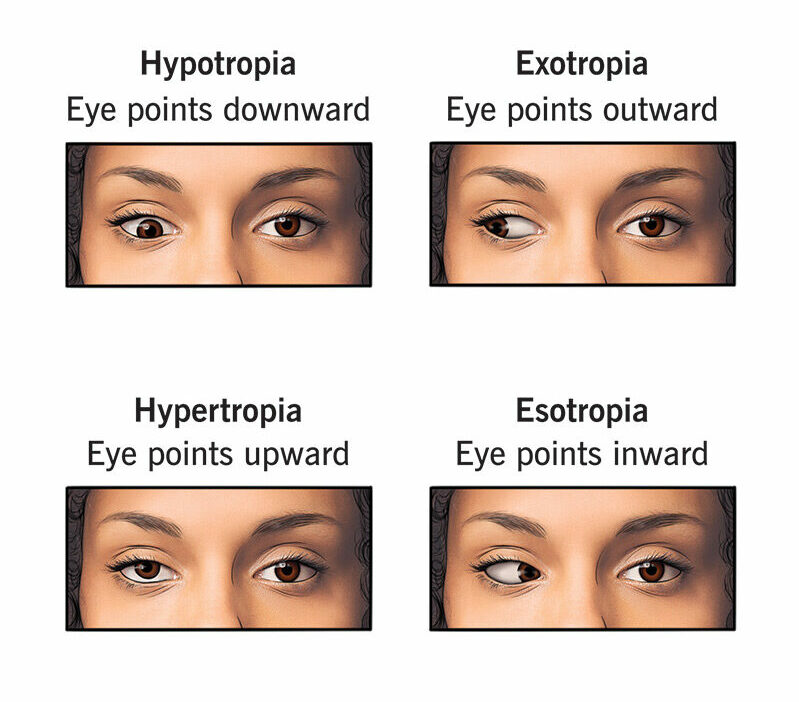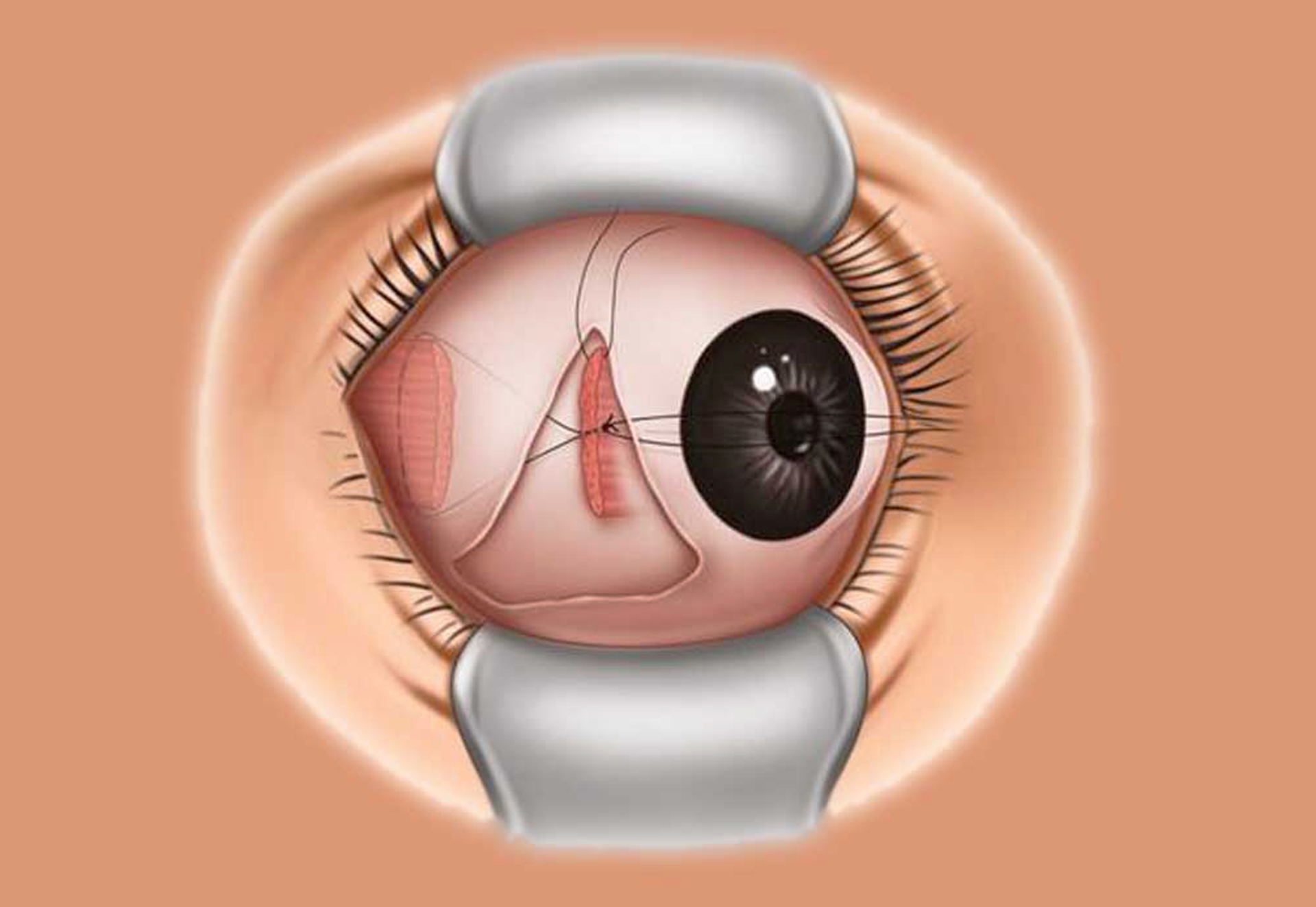

Strabismus
Strabismus (eye misalignment) is a condition in which your eyes don’t line up with one another. In other words, one eye is turned in a direction that’s different from your other eye.
Under normal conditions, the six muscles that control eye movement work together and point both eyes in the same direction. If you have strabismus, these muscles have problems controlling eye movement and can’t keep normal ocular alignment (eye position).While strabismus is mainly found in childhood, adults can also experience strabismus. Most commonly, strokes cause ocular misalignment in adults. Another cause is physical trauma.
What are the Types of
Strabismus?
The four main types of strabismus are:
1.Hypotropia. The eyes turn downward
2. Exotropia. The eyes turn outward
3. Hypertropia. The eyes turn upward
4. Esotropia. The eyes turn inward

The two most common
forms of strabismus are:
Accommodative esotropia. It tends to happen when you don’t treat farsightedness, but it may also be genetic.Intermittent exotropia. It occurs when one eye fixates on an object while the other points outward. The eye turn is only present sometimes.
Strabismus affects approximately 3% of children.6 Such untreated condition in 50% of children may experience visual loss due to lazy eye (amblyopia).
A lazy eye involves weak muscles. Therefore, the brain uses the stronger eye more, worsening the weaker one over time.

Treatment
It is important to start treatment as early as possible to prevent vision problems and vision loss :
- Strengthening the eye muscles to realign the eyes by use of glasses and eye muscle exercises
- In cases of amblyopia, covering the strong eye with a patch to stimulate the weaker eye
- Surgery to realign the muscles
Pre operative
instructions
There are no specific special considerations before the surgery other than an optometric test that will be performed to measure the angle of deviation
Post operative
instructions
Medicated eye drops will be used after the procedure and eye patch will be placed for a specific
period depending on the type of the surgery


